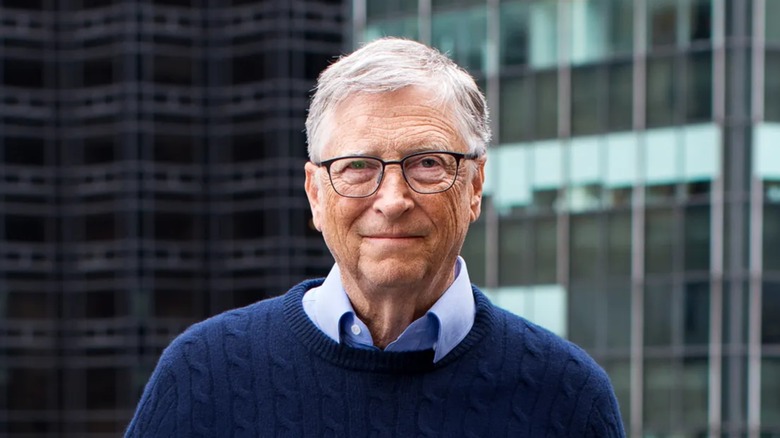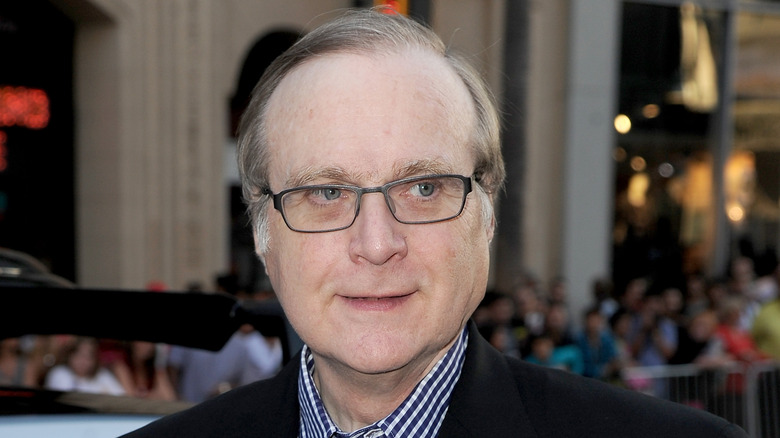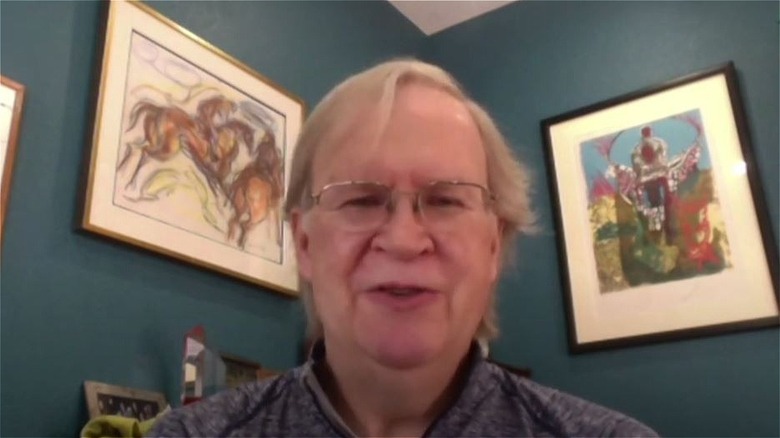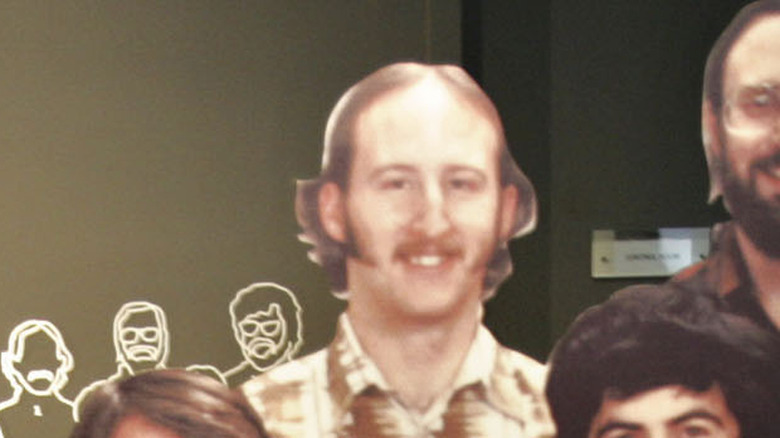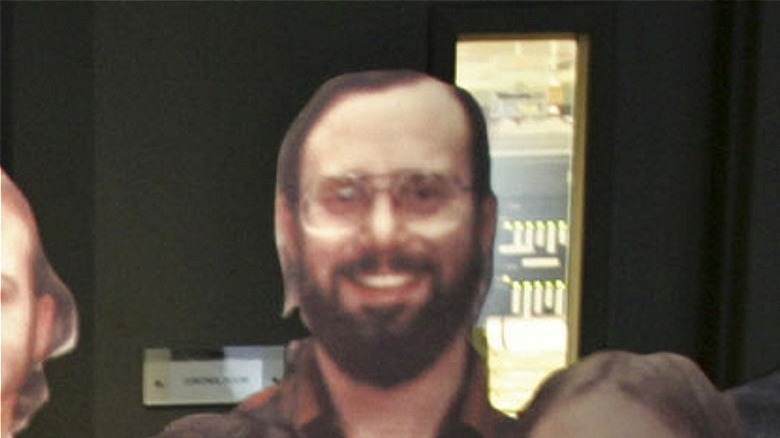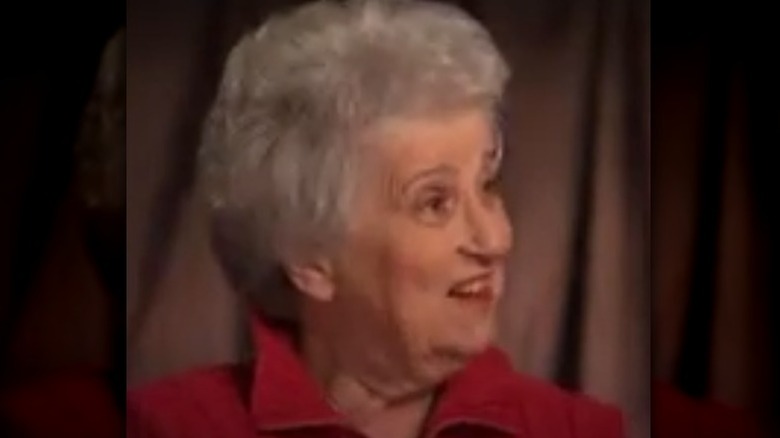Where Microsoft's First 12 Employees Are Now
Everyone knows Microsoft as a software juggernaut, but what was the company like when it took its first baby steps? In 1975, Microsoft was but a fledgling business in Albuquerque, New Mexico. It was still a good decade away from the first Windows operating system in 1985, and a long way removed from its opulent corporate headquarters in Redmond, Washington, where the company relocated in 1986 after a stint in nearby Bellevue — and where it resides to this day.
As of 2023, Microsoft employs over 220,000 people worldwide, but back in the day, the operation was quite a bit smaller. But what kind of people worked for the company back in its early years? Who managed to get in on the ground floor, and did they end up staying with Microsoft? If not, what became of them? Did they end up wealthy, or did they leave too early and could only watch as their former employer grew into one of the planet's most important business empires? Let's take a look at what became of Microsoft's first employees.
Bill Gates
A good chunk of the untold truth of Bill Gates is ... pretty extensively told, actually. Gates is the co-founder, longtime leader, and most recognizable face of the company. He's also a perennial entry on lists of the world's wealthiest people, though he doesn't intend to stay that way. In 2010, Gates, his then-wife Melinda, and fellow billionaire Warren Buffett created and signed the Giving Pledge, a non-binding agreement to get billionaires to give away half of their wealth or more over the course of their lifetime. Numerous billionaires from Mark Zuckerberg to George Lucas joined right away, and more have trickled in every year.
Though it's still easy to associate Gates with the company, he has actually gradually removed himself from Microsoft for quite a while now, and hasn't even been a board member since 2020. His main focus is the Bill & Melinda Gates Foundation, a philanthropic organization that operates in a wide variety of areas. Since he's still a tech guy with a vast fortune, he's also used his wealth for some serious rich person stuff — notably, a huge high-tech mansion called Xanadu 2.0. On the personal front, however, everything hasn't been easy, as Bill and Melinda Gates announced their divorce in 2021.
Paul Allen
Microsoft's other and somewhat more low-profile founder, Paul Allen, passed away on October 15, 2018, at the age of 65. The cause of the Microsoft co-founder's tragic death was non-Hodgkin's lymphoma. This wasn't Allen's first time dealing with the cancer. In fact, its emergence contributed to him leaving Microsoft in 1983. Apart from his health issues, by that point his relationship with Bill Gates had grown cold and the men — who had gone from staunch friends to constant fighting and bickering — rarely interacted.
Once Allen left Microsoft, his cancer went into remission and he started a new life as a multi-field entrepreneur whose businesses ranged from a museum of experimental music to deep sea exploration, AI, and SpaceShipOne – the first privately owned spaceship that actually went to space. He also owned the NFL team Seattle Seahawks and the NBA team Portland Trail Blazers, and co-owned the MLS team Seattle Sounders.
Much like his former Microsoft business partner Gates, Allen was also a notable philanthropist. However, Allen directed much of his activities on this front toward his hometown, Seattle, where he spearheaded a number of prominent development projects over the years. "He has a definitive role of what we understand as today's Seattle, which is about technology, about real estate and about a distinctive local culture with international visibility," Professor Margaret O'Mara of the University of Washington described Allen's impact on the city (via The New York Times).
Andrea Lewis
Andrea Lewis joined Microsoft in 1978 as a technical writer, and stayed with the company until 1983. Though her tenure with the company ended before Microsoft truly struck it big, the software firm was already doing quite well for itself, and the stock options Lewis received made her reported net worth around $2 million circa 2014 (via the BBC). Adjusted for inflation, this would be around $2.65 million.
After Lewis left Microsoft, she became her own boss and has stayed that way ever since. After 1998, she started transitioning from technical writing into an author of poems, short stories, and a 2017 short story collection called "What My Last Man Did." Apart from her personal literary endeavors, she has also been involved in the larger writing community of the Seattle, Washington, area, where she resides with her family. In 1994, Lewis co-founded a literary center called Richard Hugo House. Between 1993 and 2013, she did volunteer work for the Washington Talking Book and Braille Library, narrating audiobooks for them.
Marla Wood
Marla Wood's experience with the company was somewhat more tumultuous and brief than those of most other original Microsoft workers. She was an administrative assistant for the company but ended up becoming the face of a gender discrimination lawsuit of an unspecified nature — which was ultimately settled — and leaving as early as 1980. Wood and her husband, fellow Microsoft worker Steve Wood, left at the same time. While he continued working in tech, she focused on family life and volunteer work.
Despite the fact that the circumstances of Marla and Steve Wood's 1980 departure from the company sound somewhat rough, it appears the decades have managed to smooth over potential ruffled feathers on all fronts, and there's no particularly ill will between Marla and Microsoft. After all, when the founding employees depicted in the well-known company photo taken in 1978 gathered together to recreate the shot in 2008, both she and her husband were among the attendees.
Bob O'Rear
Bob O'Rear, Microsoft's seventh employee, already had experience working with the NASA contractor TRW Systems, where he worked with things that ranged from spy satellites to atmospheric re-entry code for the Apollo space program. Despite his role in the untold truth of NASA and later Microsoft, he actually once entertained the idea of becoming a tennis coach. Instead, he emerged from the University of Texas in Austin with a degree in math and astrophysics, and in 1977 his career path took him to Microsoft.
O'Rear was a decade older than most of his colleagues, and became the software company's project manager. Before he transitioned to a corporate role that involved heading Microsoft's European office, he developed MS-DOS. He eventually left the company in 1993. In his post-Microsoft life, he's served on his alma mater's College of Natural Sciences Advisory Council, and worked on real estate projects.
Given his experience in the industry, it's no surprise that O'Rear has kept tabs on technology over the years. "The programs we have now are so much more complex than what I ever had in mind, and the kind of leaps and bounds that technology is able to accomplish because of computers is mind boggling to me," he told El Paso Inc. in 2011. "The level of complexity of say, a modern operating system, is amazing. The DOS that I wrote is probably less complex than simply formatting a character in Excel."
Bob Greenberg
Bob Greenberg wasn't a particularly long-term member of the Microsoft family. He joined the company in 1977 and left in 1981, and worked with the BASIC programming language during his time with the company. However, while it's difficult to find information about his exact post-Microsoft career, his next move seems to have been all about family: He was part of a very particular Greenberg family — the one that owns Coleco, the company known for turning the Cabbage Patch Kids into a cultural phenomenon.
The toy line wasn't the family's only venture. After trying and failing to get a foothold in the video game console business by investing in Telstar, the Greenbergs' Coleco company had found more success with another console called ColecoVision — and with the strange 1983 Cabbage Patch Kids craze where people actually fought for the dolls in stores, they struck gold.
After leaving Microsoft, Greenberg became an investor. His most recent public involvement with the tech giant seems to have been in 2008, when he met with the other Albuquerque originals for a reunion. "Right from the start ... Bill [Gates] knew this was going someplace, and we were along for the ride," he said at the event (via Microsoft). "I joked with him about lots of different things, but I learned very quickly the one thing you couldn't joke about was the company itself. You couldn't touch that ground."
Marc McDonald
There's only one first for everything, and when it comes to Microsoft personnel, this honor befell Marc McDonald. Bill Gates and Paul Allen may have founded the company, but McDonald was Microsoft's very first hire. In fact, the software developer's fate was so intertwined with the company that he ended up working for it not once, but twice.
Like some other people on this list, however, McDonald had some issues with the company's rapid growth, and decided to leave the nascent supercorporation in 1984 for smaller pastures — namely, Allen's new company Asymetrix, where he also managed to be the first hired employee. However, Microsoft came knocking again in 2000. At the time, McDonald was with Design Intelligence ... which Microsoft bought, so he found himself working for the company once more.
This time, McDonald stayed with Microsoft a while longer. In 2011, he left his principal development engineer gig for a job with MindMode, and in 2013, he started working at his most recent position as a software architect for the display ad company PaperG.
Gordon Letwin
Gordon Letwin remained with Microsoft from 1978 to 1993. Bill Gates valued Letwin's programming talent and he undertook and supervised several projects, from leading the OS/2 operating system build to devising Microsoft's original email system. Letwin became known as an eccentric who was fascinated by science fiction on the verge of existence — or perhaps fantasy would be a more appropriate genre, given his penchant for wizard gear like wands and crystal balls.
"There are some common elements between high-level software and traditional magic,” Letwin told the Seattle Times in 1988. "In traditional magic, if you cast extremely complicated incantations exactly right, then you'd force this very powerful being into doing your bidding, but if you got the tiniest detail wrong, then you were dead meat. And that's exactly what it's like dealing with a sophisticated computer system. It is extremely esoteric, extremely strange. And if you get it exactly right then the beast does your bidding. Otherwise it chews you up.”
Letwin didn't technically quit Microsoft, but it doesn't appear that he ever returned to the company from the leave he took in 1993. Since then, he's become known in Seattle as a reclusive philanthropist whose estimated 1993 net worth was $20 million ($42.8 million, adjusted for inflation). He seems to enjoy his privacy and avoids making much noise, save for one possible exception. In 2023, local media suspected him of being behind a giant private fireworks display that disturbed the locals, but this was never confirmed.
Steve Wood
Steve Wood was the sixth-ever employee in Microsoft's long and storied history. However, he left the company at the same time his wife, Marla Wood, did. The couple left the company amidst the discrimination lawsuit Marla spearheaded, but Steve's Microsoft connections — or rather, ex-Microsoft connections — were far from exhausted. He cooperated with Microsoft's co-founder Paul Allen, who left the company himself in 1983, on several projects, and has gone on to create an impressive tech career in his own right.
Wood has a long string of vice president, CEO, partner, and company president positions and board memberships that include Wireless Service Corporations — which he founded — and Pine Hill mobile, and range from a vice president gig at Allen's 1980s software firm Asymetrix to the present. All of this is in line with his 1992 comments to The New York Times, which indicated that he intended to keep quite busy.
"Everybody at Microsoft wanted to change the world through technology," Wood said. "The money is nice, and nobody's complaining about it. But I don't know anybody who wants to just retire."
Bob Wallace
The ninth employee in Microsoft's history, programmer Bob Wallace, left the company in 1983 but went on to make an impact in other avenues of tech. Wallace exited Microsoft with stock options that were worth up to $15 million after growing concerns that the company's rapid growth would stifle him. The same year he walked from Microsoft, he founded Quicksoft. This company introduced a new word processor software called PC-Write to the market — and perhaps more importantly, came up with the concept of shareware, a type of software that could be used as a light version for free but could be upgraded to its full capabilities for a registration fee. Wallace didn't introduce the concept to corner the market, preferring instead to please whatever customer base he could build.
"I don't worry about the people who don't register," Wallace described his shareware philosophy to the Associated Press in 1989 (via the Los Angeles Times). "I worry about the people who do register. I want to make sure they're happy. If they're happy and we're making a reasonable profit, that's good."
Quicksoft went under in 1993, after which Wallace focused on a company that sold books about his personal passion, psychedelic and hallucinogenic drugs. He died in 2002 at age 53.
Jim Lane
Microsoft's decades-long, strong collaboration with chip manufacturer Intel is such a famous personal computer partnership that it's known as "Wintel" in tech circles. Project manager Jim Lane started working for Microsoft in 1978, and was an important person when it comes to establishing this relationship. Apart from his business savvy, Microsoft co-founder Paul Allen recalled in his autobiography "Idea Man: A Memoir by the Co-Founder of Microsoft" that Lane was also something of a fan of life during the Middle Ages, to the point that he regularly attended medieval fairs and had his own broadsword.
Lane eventually grew unhappy with the company and ended up leaving in 1985, citing a lack of enthusiasm caused by the company's demands as the reason for his departure. He went on to establish his own software company, and except for taking part in the 2008 reunion of Microsoft's old guard, he doesn't appear to have publicly interacted with the company after leaving it.
Miriam Lubow
Someone you won't find in the 1978 Albuquerque photo is Miriam Lubow, who couldn't make it to the shoot because of bad weather. She eventually made it in the 2008 recreation of the photo — though since Bob Wallace died in 2002, it didn't alter the number of people in the picture. Lubow was the company's receptionist, office manager, and maternal figure who wasn't familiar with computer software but who knew how to run an office. She was also one of the early Microsoft employees who weren't hired by Bill Gates — instead, Steve Wood recruited her. As such, she wasn't familiar with Gates at first, which led to a fun misunderstanding.
"One morning in comes this kid, sneakers and blue jeans and hair disheveled, and I'm thinking this kid doesn't belong here, what is he doing?" she told the story at the 2008 reunion (via Microsoft). "He runs by my office and goes into the computer room that Steve said 'nobody should go in there; it's private. Don't let anybody in there.' I said, 'Look, Steve, this kid runs in there, and he's in that room, and he's working like he owns this place, and Steve says, 'Well, you know what, he does. He's your boss. He's the president.'"
Lubow intermittently worked with the company for roughly a decade and thoroughly enjoyed her time there. She was already retired and had kidney cancer at the time of the 2008 reunion, and died later that year at 72.

